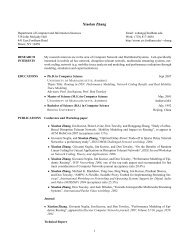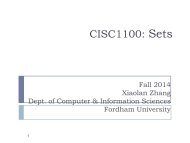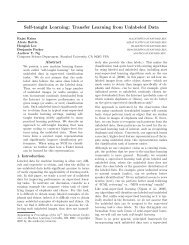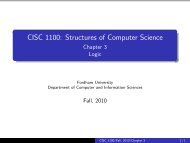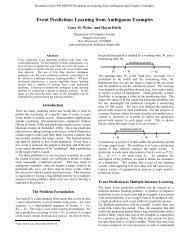Basic Principles of Transcription and Translation - Computer ...
Basic Principles of Transcription and Translation - Computer ...
Basic Principles of Transcription and Translation - Computer ...
You also want an ePaper? Increase the reach of your titles
YUMPU automatically turns print PDFs into web optimized ePapers that Google loves.
Amino acid<br />
P P P<br />
ATP<br />
Adenosine<br />
Aminoacyl-tRNA<br />
synthetase (enzyme)<br />
1) Active site binds to the amino acid<br />
<strong>and</strong> ATP<br />
2) ATP loses two P groups <strong>and</strong> joins<br />
amino acids as AMP<br />
tRNA<br />
P Adenosine<br />
P P i<br />
P i P i<br />
tRNA<br />
Aminoacyl-tRNA<br />
synthetase<br />
3) Appropriate tRNA covalently bonds to<br />
amino acid displacing AMP<br />
4) The tRNA charged with amino acid is<br />
released by the enzyme<br />
P<br />
Adenosine<br />
AMP<br />
Aminoacyl-tRNA<br />
(“charged tRNA”)<br />
<strong>Computer</strong> model<br />
An aminoacyl tRNA synthethase joining<br />
a specific amino acid to a tRNA.<br />
Linkage <strong>of</strong> the tRNA <strong>and</strong> amino acid<br />
is an endergonic process that occurs<br />
at the expense <strong>of</strong> ATP. The ATP<br />
loses two phosphate groups<br />
becoming AMP (adenosine<br />
monophosphate)<br />
Ribosomes<br />
Ribosomes facilitate specific coupling <strong>of</strong> tRNA anticodons<br />
with mRNA codons in protein synthesis<br />
The two ribosomal subunits (large <strong>and</strong> small) are made <strong>of</strong><br />
proteins <strong>and</strong> ribosomal RNA (rRNA)




